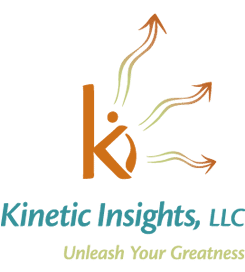When the Middle becomes the Beginning
Do you think it’s too costly to develop your middle managers as well as your executives? Think again.
Many organizations treat middle management as a Darwinian proving ground by making a minimal investment and then waiting to see who survives. Meanwhile, the best development tools such as executive coaching, action learning task teams, and high fidelity simulations, are reserved for senior leaders and a select group of high potentials. These are often expensive and the size of their middle management population drives organizations to invest development dollars where they will get the best ROI. Makes sense right?
But what if we have the ROI calculation wrong?
Here’s what we know about middle managers:
- These are the leaders who operationally define and create the culture of an organization (Gallup 2013)
- They are the key executors of change management (HBR 2014, Forbes 2017)
- They interpret organization strategic goals to the broader organization
- They are the talent pool for high potentials and senior leaders in whom we invest so much.
- They are the most influential factor in retention/turnover because they have the most influence on an employee’s daily experiences (Smartbrief 2017)
The scariest thing we know is that middle managers are the least satisfied and engaged group of employees.
Gallup’s most recent data reports the percent of engaged middle managers at 35%, which means 65% are passively to actively disengaged. Given the roles these managers play, their level of satisfaction has a compound effect on the rest of the organization – impacting everything from turnover to customer service to business strategy execution — and it’s likely to get worse. Flatter organizations and the “leaning” of the workplace not only require doing more with less, but we are now asking these middle “leaders” to take on roles that we previously only expected of senior leadership – strategy execution, culture development, change management, communicating vision and purpose, and more.
If the qualitative case doesn’t have you convinced, consider the quantitative case:
- 60% of new managers fail within two years (CEB and Inc. 2017)
- Employees with strong middle managers are 20% less likely to quit
- The cost of replacement of an employee ranges from 33% to 50% of their base salary
- Middle manager level replacement costs range from 50% to 100%
- None of these replacement cost estimates include indirect costs like knowledge lost, time to fill, time to on-board, and loss of team productivity
One of the most compelling reasons to refocus development investment comes straight from our experience working at all levels. We routinely find that middle managers learn new skills and behaviors much more quickly and are more open to coaching than senior executives. By the time senior leaders are offered the usual development tools, we find that their leadership and management habits are much more established and they are often locked into their “survival of the fittest” style that got them to this point – which are usually not the behaviors you intended for them to carry into their role. With coaching, middle managers will be better able to make the transition from “managing tasks through others” to asking the questions and providing the support that allows those below them to diagnose their own problems and make their own decisions.
Given all of this, how can we make a better investment in middle managers?
Of course, it is not reasonable to hire executive coaches for dozens of middle managers and executives at a rate of hundreds of dollars per hour, but it IS possible to have a high impact solution that doesn’t break the budget.
The most effective approach is NOT a one-size-fits-all answer, but a custom-fit combination of tools that work together to develop individuals with both better management skills and better potential for true leadership at every level.
- Diagnostics
- Independent experiential learning
- Expert-supported peer coaching,
- Group coaching
The power of facilitated group and peer coaching for mid-level managers
In recent work with one of our clients, a group of mid-level managers was forced to accommodate enormous cost overruns and serious project delays of nearly a full year after one of their peers resigned under a cloud of confusion and miscommunication.
One of the leaders asked if there was anything the rest of them should have done to avoid this crisis. During careful exploration, which we facilitated, the group discovered that each one of them was aware of their colleague’s struggles but no one took any action to offer help or to make senior leadership aware of the problems.
The group ended up coaching each other on how to better handle similar situations in the future. They recognized and acknowledged their over-riding responsibility to the organization and the implications of blindly supporting their peers. It is a powerful lesson that will serve each growing leader and their organization very well – and it was learned organically and uniquely through group coaching.
At Kinetic Insights, our clients achieve outstanding ROI when we help them develop their middle-level leaders using these tools and methodologies within very cost-effective budgets.
At Kinetic Insights, our PathFinders are skilled in helping leaders unleash the greatness in themselves and in their organizations. Call or email us for a quick discussion that just might put you and your team on the path to significant change.











Leave A Comment